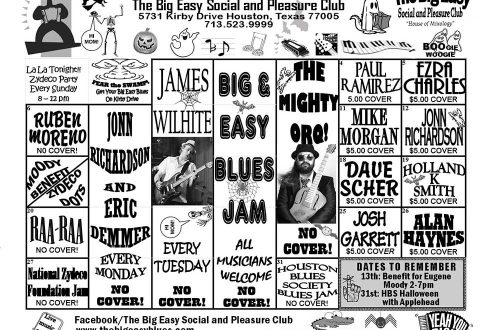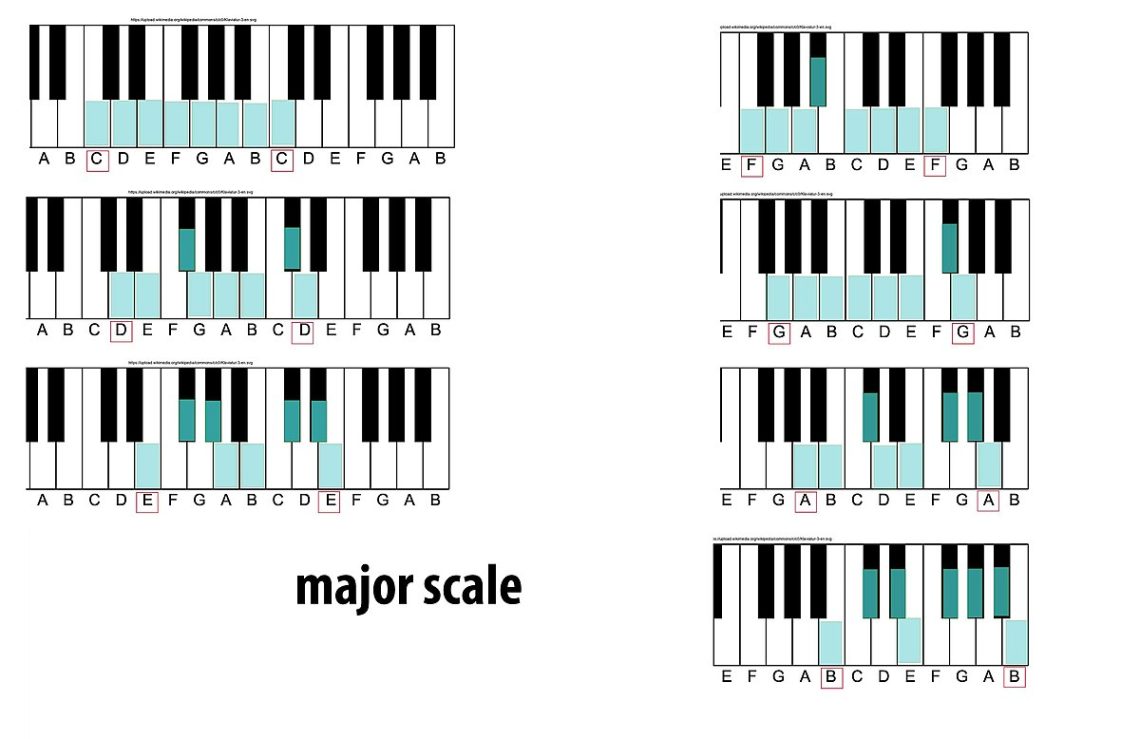
Three types of major in music
There are three main types of major. Just like in the case of minor, these are natural, harmonic and melodic modes.
Let’s take a closer look at the features of each type.
natural major
This is the simplest scale, built according to the principle of alternating tones and semitones: “2 tones – semitone – 3 tones – semitone.” In total, there are eight musical steps in such a scale (I, II, III, IV, V, VI, VII and again I).
And, according to the formula for the structure of this scale, between the I and II steps there should be a distance of one whole tone, between the II and III steps there should also be a whole tone, the III and IV steps are half a tone apart (semitone). Further, according to the same formula, between the IV and V, V and VI, VI and VII steps, you also need to take a whole tone to make it work. Finally, the semitone closes the chain between the VII and the I step repeated above.

We have already examined in great detail the technique of building scales according to this formula in the lesson “Frame in Music: Major and Minor” – there you can find both examples and explanations about tones and semitones.
For the sake of brevity, let’s look at just one example. Let’s say we need to get the A major scale (letter designation – A-dur). This scale begins with the sound LA and ends with it. Accordingly, for starters, we can simply write the scale of notes from LA to the next, higher LA, that is, make a kind of blank.

Then, you need to put things in order in this range, according to the formula. Perhaps there will be some signs of alteration – sharps or flats. For convenience and clarity, when working with tones and semitones, at this stage it is usually suggested to use the piano keyboard.
BRIEFLY ABOUT TONES AND SEMITONES
Recall that if there is a black one separating them between two adjacent white keys of the piano, then the distance between them will be equal to one whole tone (for example, FA and SOL, LA and SI).
If there is no separating black, if two white keys are in direct contact and are the nearest neighbors to each other, then in this case the distance between them will be equal to half a tone (there are only two such gaps on the keyboard – MI-FA and SI-DO).
Also, a semitone is the distance between any two nearest keys (usually in combinations – black and white or white and black). For example: C and C-SHARP or C-SHARP and RE, etc.

[collapse]
So, let’s bring the distance between the steps of our workpiece in accordance with the natural major formula.
| STAGES | DISTANCE ACCORDING TO THE FORMULA | CORRECTION |
| I-II | Tone | LA and SI – between these notes there is one whole tone, as it should be, no changes are needed here, let’s move on. |
| II-III | Tone | SI and DO – between these sounds is a semitone, but the formula requires a whole tone, so a correction is required here. Since we lack one more semitone to a whole tone, we add it by raising the note DO – we take DO-SHARP, thereby increasing the distance, and we have the first sign. |
| III-IV | Semitone | C-SHARP and RE – semitone: as it should be. As you can see, the change in the previous position had a beneficial effect here as well: as a result, we have complete order on both sides. |
| IV-V | Tone | RE and MI – a whole tone, as it should be, let’s move on. |
| V-VI | Tone | MI and FA are semitones, but you need a whole tone. We eliminate this drawback, increase the FA stage, take FA-SHARP instead, and now the distance between the MI and FA-SHARP stages has become a whole ton. |
| XNUMX-XNUMX | Tone | F-SHARP and SALT – again a semitone, and again, according to the formula, a tone is required. We do the same – we add the missing, and thus we get SALT-SHARP. |
| VII-I | Semitone | G-SHARP and LA – semitone, as it should be, everything is fine here. |
In the course of working on the scale, we got three new characters, three sharps – F-SHARP, C-SHARP and SOL-SHARP. The reason for their appearance is the correspondence of the ratios of sounds to the formula of the major scale. If at least one of these signs were not accepted, then a real major scale would not work, that is, it would sound either in a minor key or in some other way.

However, in order to find out which sharps or flats should be present in one or another natural major scale, it is not at all necessary to rebuild the scale according to the formula each time. You can use a table of ready-made results – the so-called circle of fifths of keys, and also learn how to instantly identify signs in keys according to the method we proposed in the lesson “How to remember signs in keys.” A professional musician should not for a second think about what signs are in a particular scale, but should simply know it “like twice two” (learn, memorize, master).
METHOD FOR DETERMINING SIGNS IN MAJOR KEYS
Let us briefly recall the essence of the method for quickly determining signs in major keys without using the formula for the structure of the major scale. You should always remember the correct order of key sharps and flats. The order of the sharps is FA DO SOL RE LA MI SI. Flat order: SI MI LA RE SOL DO FA.
Rule 1. If the key is sharp, then the last sharp in the scale is one step lower than the tonic.
For example, in the key of B major: the tonic is SI, and the last sharp will be a step lower than SI, that is, LA. In total, there will be 5 sharps in C major: FA DO SOL RE LA (we say everything in order, we stop at the “last” LA SHARP).
Rule 2. If the tonality is flat, then to determine the signs we go in the order of flats, we reach the tonic we need and add one more, the next flat.
For example, in the key of A-flat major, the tonic is the sound A-flat. We go in order of flats: SI, MI, LA (here we have reached the tonic) + we capture the next flat RE in order. In total, there are 4 flats in A-flat major: SI MI LA and RE.
How to determine whether the key is sharp or flat? Very simple. Flat keys usually have the word “flat” in their name (for example, B-flat major, MI-flat major, C-flat major). In the name of sharp keys, either simple unaltered steps appear, or there is the word “sharp” (for example, G major, E major, F-sharp major).
There are, however, exceptions to the rule, these are two major keys that need to be remembered: C major (there are no sharps or flats at all) and F major (there is one B-flat in it, although there is no word “flat” in the name of the key).
[collapse]
Natural major is very common both in folk music and in classical music composed by composers. So, for example, the melody of the National Anthem of the Russian Federation was recorded in the key of natural C major.
Harmonic Major
In the harmonic major, in contrast to the natural, the sixth degree is lowered. The decrease occurs by half a tone using the flat sign (if before the decrease the step was a pure note, that is, without alteration), double flat (if before the decrease the step was already low, flat), or using the bekar sign (in that case , if the step was a sharp note before the fall).

So, for example, in the harmonic E-flat major (Es-dur), in addition to its own three flats (SI, MI, LA-FLAT), C-FLAT (VI reduced step) will also appear. In the harmonic B-major (H-dur), as a result of lowering the sixth step, G-BECAR will appear (in this key, the original, natural sixth step is G-SHARP).


The harmonic reduced VI degree in major changes the structure of the scale scale, and also causes the appearance of new increased and decreased intervals in this kind of mode. So, for example, between the III and VI lower degree, an interval of a reduced fourth (min. 4) is formed, which is not in the natural major. Between the VI reduced and VII steps there is an interval of an increased second (uv.2).

In addition, changing just one step also affects the formation of chords in the key. So, due to the VI reduced step, the subdominant triad – S53 (the subdominant is the IV step, one of the main steps of the mode) becomes minor, while in natural major it was major. The triad of the VI degree, which was minor in natural major, becomes increased (Uv.53).

The lowering of the sixth degree is used by composers with pleasure in order to increase the brilliance of music, to create a new flavor of sound. After all, an unexpected minor chord in the conditions of a major fret creates shades of softness, unusual sounding, sometimes brings oriental colors. The most important thing is that this simple means never goes unnoticed by the listeners, the lowering of the VI step is always perceived in a special way.
So that you yourself can appreciate the beauty and interesting sound of the harmonic major, we suggest you listen to an example from musical literature. This is a melody from the opera N.A. Rimsky-Korsakov “The Night Before Christmas”.

melodic major
In the melodic major, two steps change at once – VI and VII, and they also go down. However, the melodic scale is special; unlike the natural and harmonic ones, it is different when moving up and down. So, in the melodic major there are no changes during the upward movement, that is, the ordinary natural major is played or sung, and only when moving down do the VI and VII steps go down.

So, for example, in the melodic E-flat major (we already know – three “our” flats: SI, MI, LA) there will also be D-flat with C-flat. In melodic C major (five own sharps: FA, DO, SOL, RE, LA), in the downward movement there will be LA-BECAR AND SO-BECAR.


Interestingly, the melodic major scale is very similar in sound to the minor of the same name. As you know, the keys of the same name (for example, B major and B minor, C major and C minor, etc.) differ in only three steps – III, VI and VII (in minor they are low, and in major they are high). So, the only thing that distinguishes melodic major and natural minor is the third step, while the sixth and seventh steps in this case are low and therefore coincide.
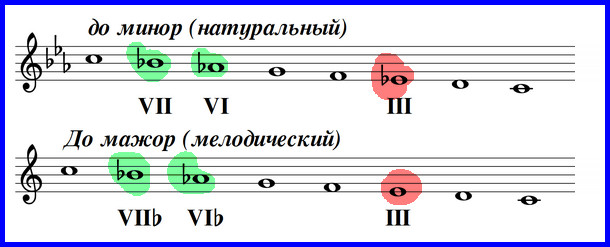
The artistic effect of using the melodic type of major is often based on this game with major and minor: we seem to be in a minor key, but it turns out we are not (a kind of snag)!
Let’s do it again
So, in music there are three types of major: natural, harmonic and melodic.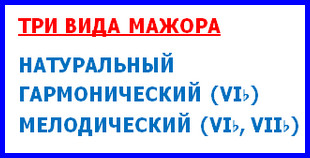
- natural major scale is obtained with such a combination of relations between sounds: “2 tones – semitone – 3 tones – semitone”.
- Harmonic Major – the sixth step is lowered in it.
- melodic major – when moving up, nothing changes, but when moving down, the sixth and seventh steps go down.
A few exercises
To consolidate, we suggest you practice a little. The task is as follows: to record and play (or sing/say) the scales of natural, harmonic and melodic major in the keys of G-dur, B-dur.
SHOW ANSWERS:
The tonality of G-dur is G major, it is sharp, moreover, there is only one key sign – F-sharp. In the harmonic G major, the lowered VI degree is MI-FLAT. In the melodic G major – when moving down, the signs FA-BEKAR (reduced VII degree) and MI-FLAT (reduced VI) will appear.
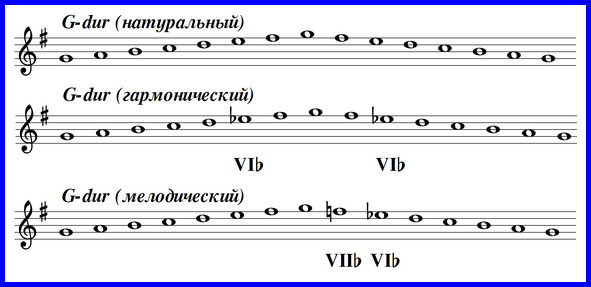
The key of B-dur is B-flat major, flat. The key signs are SI-FLAT and MI-FLAT. In the harmonic B-flat major – we add a random sign in G-flat (since the sixth step was lowered). In the melodic scale, when we go up, nothing changes, but when we go down, we pass through A-FLAT and G-FLAT (lower steps, according to the rule).
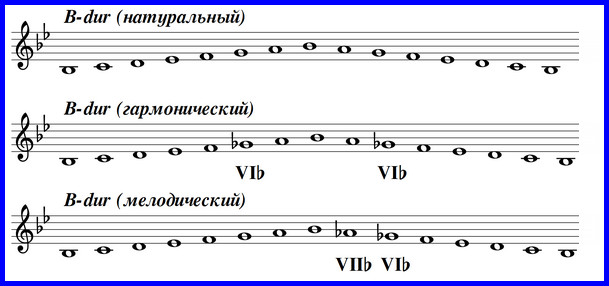
[collapse]
Major scale table
If orientation in scales still causes you difficulties, then for the first time you can use our table with hints for self-examination. Over time, everything will get better, and you will navigate the scales as easily and naturally as a fish swims in water.
So what does the table contain? Firstly, the syllabic and letter designation of the major key (by the way, there are only 15 of them). Secondly, the key signs that will form your first – natural – type of gamma. The third and fourth columns show the changes that occur in the harmonic and melodic types of scales.

So, according to this table, in the natural scale of D major there are only the main key signs: F-SHARP and C-SHARP. The harmonic D major also includes B-flat, the melodic D-major includes C-BECAR and B-flat.
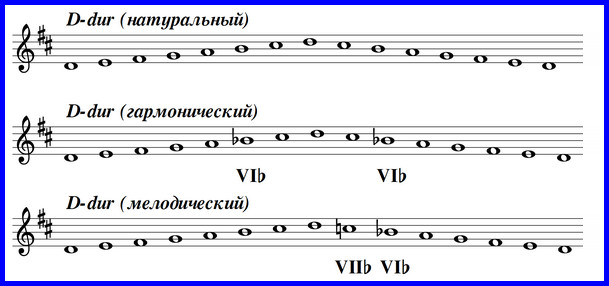
Or another example: A-flat major is natural – there are only four flats in its scale: SI, MI, LA, RE. In the harmonic form, F-FLAT will be added to them, and in the melodic form, both F-FLAT and G-FLAT will be added.
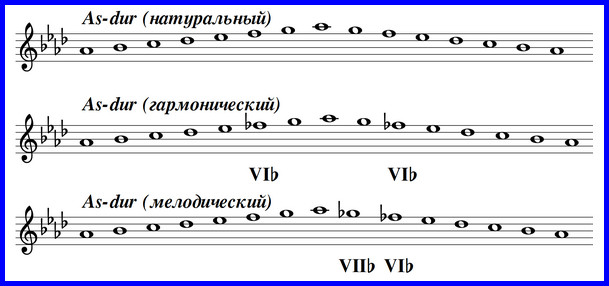
That’s all for now. See you in the next lessons!



